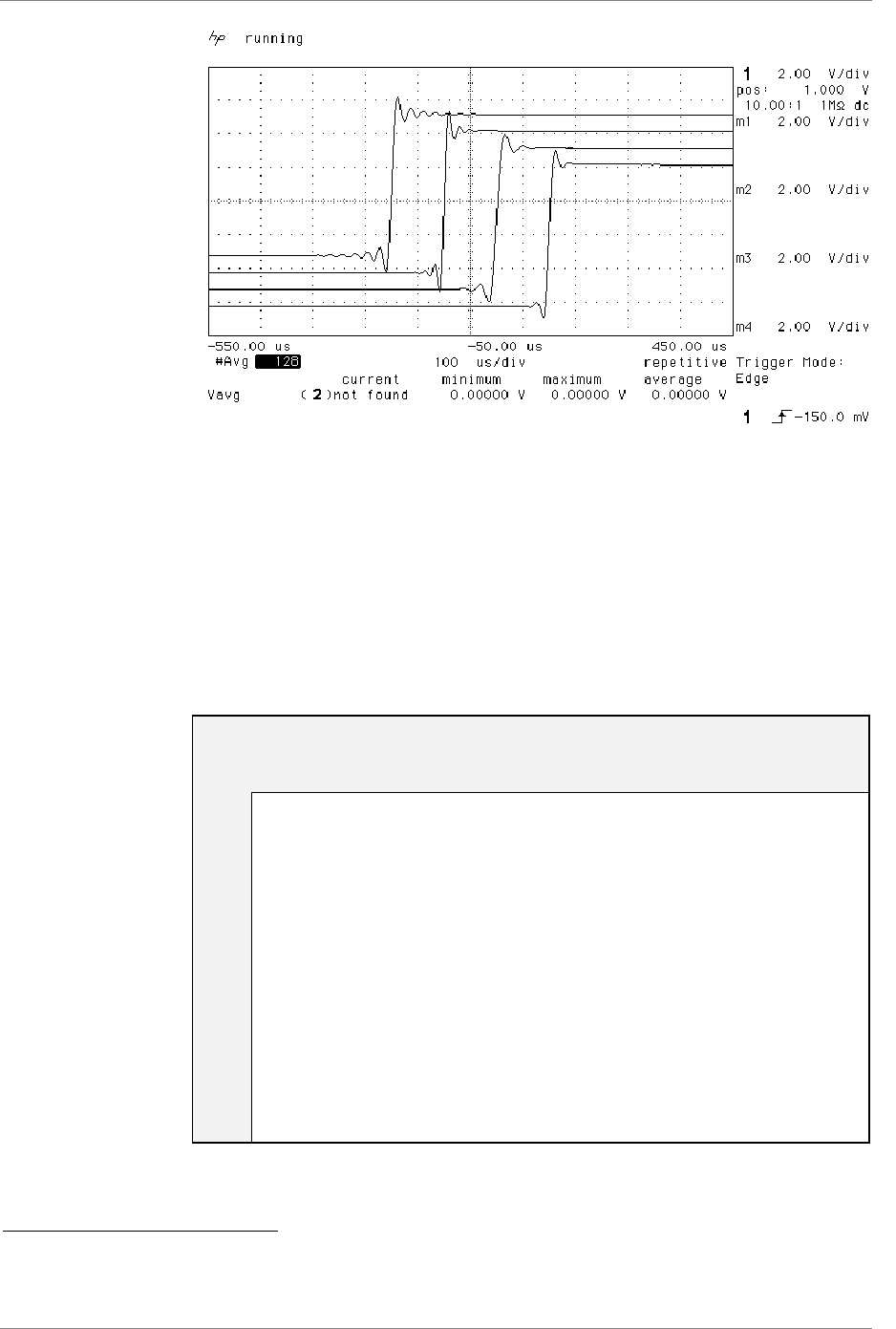
dCS 974 User Manual Manual for Software Version 1.0x
dCS Ltd May 2001
Manual part no: DOC1241121A1
Page 74
Document No: OS-MA-A0124-112.1A1
Contact
dCS
on + 44 1799 531 999 email to: more@dcsltd.co.uk
(inside the UK replace + 44 with 0) web site: www.dcsltd.co.uk
Figure 20 – Transient Performance of 96 kS/s Filter Options
Spurs
Sample rate conversion is a linear process, so spurs are not caused by
mechanisms that produce harmonic distortion. Spurs
16
are caused by high order
images of the baseband input signal aliasing back into the output
17
. The filtering
in the converter has to suppress these.
We measure these spurs for a 1 kHz input signal – typical values are given in
dB0 for a -1dB0 sine wave in the table below. The blank cells are two pass
conversions, where the performance depends on both conversions.
Output Sample Rate (kS/s)Input
Rate
(kS/s)
11.02
5
12 16 22.05 24 32 44.1 48 88.2 96 176.4 192
11.025 -130 -122 -143 -117 -136 -140
12 -139 -136 -131 -135 -138 -137
16 -132 -119 -132 -119 -112 -130 -137
22.05 -137 -145 -124 -134 -130 -134 -113 -139
24 -121 -134 -127 -142 -137 -128 -129 -134
32 -128 -133 -123 -131 -107 -134
44.1 -132 -120 -124 -133 -145 -125 -136 -126 -127 -109 -132 -119
48 -118 -132 -136 -119 -134 -125 -137 -136 -127 -130 -132
88.2 -129 -120 -119 -135 -120 -125 -137 -145 -139 -121 -117 -105
96 -97 -126 -138 -116 -135 -139 -117 -137 -119 -139 -117
176.4 -137 -134 -135
192 -128 -130 -139 -131 -135
Table 6 – Typical Spurious Level vs Conversion
16
Spurious products
17
For example, a 1 kHz tone with a 48 kS/s sample rate in will produce spurs at 2.9 kHz and 4.9 kHz, 6.8 kHz
and 8.8 kHz, etc, with a 44.1 kS/s sample rate out.


















